A dominant presence in the digital landscape, Facebook is a foundational part of any well-made digital marketing strategy. Offering business owners a smart and savvy way to get their brand in front of the right users, at exactly the right time, advertising on Facebook has become a marketing must.
Facebook is the world’s third-most visited website and welcomes nearly two and a half billion active users every month (Hootsuite), and continues to grow larger by the year. When you realize the potential payoff of placing an ad on Facebook, it’s probably not surprising that there’s a certain cost to consider – after all, nothing good comes free. With the power to promote your business to a perfectly-targeted base of online users, Facebook advertising is one of the smartest investments you’ll ever make.
But before most business owners are ready to dive into Facebook advertising, they want an answer to a key question: how much does it cost to put an ad on Facebook? And although that answer might be slightly more complex than you’d expect, getting a better idea of your expected investment is an excellent first step in the right direction.
Your trusted team of marketing experts from V Digital Services has created a go-to guide that discusses the details of Facebook ad pricing. Once you’ve finished reading, you’ll see why Facebook ads might just become your favorite form of advertising online.
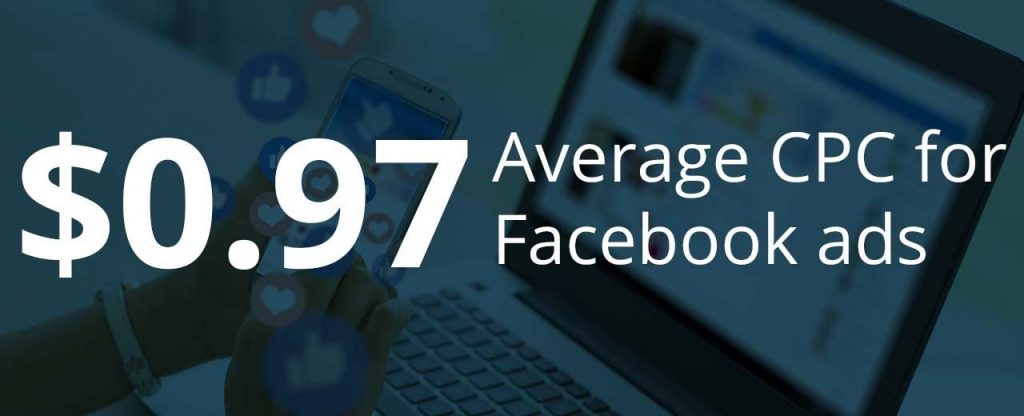
How Much Do Facebook Ads Cost?
When you’re looking at Facebook advertising cost, there are several different costs to consider:
- On average, Facebook ads cost about $0.97 per click.
- You can expect to pay an average of $ 7.19 per 1000 impressions.
- If you are designing an ad campaign based on earning likes or app downloads, the average expense is about $1.07 per like and $5.47 per download.
Although the above figures significantly simplify the numerous factors that affect Facebook ad prices, they are a useful starting point. Keep in mind that while these numbers are based on actual Facebook ad spending, your actual cost can vary.
One of the many benefits of advertising on Facebook is that you can exert a certain level of control over how much your ad campaign costs, which makes it a fantastically flexible option that can suit a range of budgets and businesses. Because the platform offers options for customizing pricing, including personalizing your ad placement and target market, you can break into Facebook ads even with a conservative budget.
Even so, setting realistic expectations is key. Like most other types of marketing, Facebook ads will typically perform better the more you invest in a specific campaign. That being said, even a fairly bare-bones Facebook marketing strategy can provide positive results for your business.
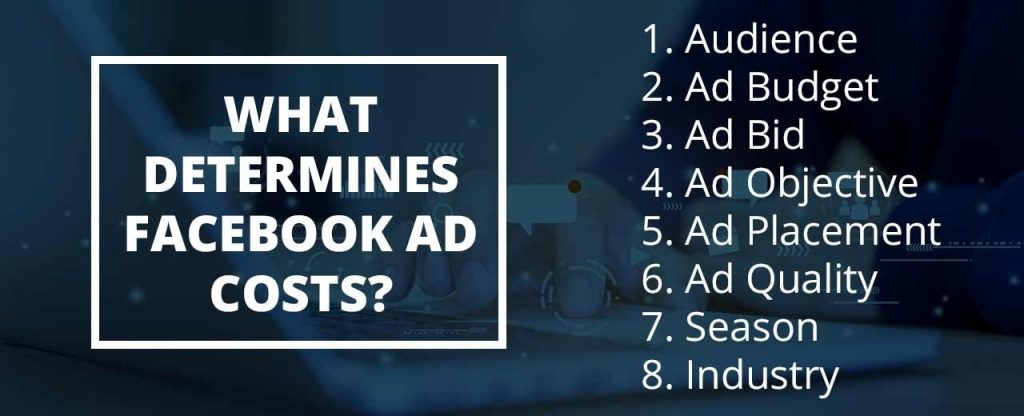
What Factors Affect the Cost of Facebook Advertising?
Similar to the pay-per-click (PPC) advertising available on Google, Facebook ad costs can vary considerably based on several different factors. By learning more about how each of these factors plays a part in the overall cost, you can effectively build a realistic budget that aligns with your goals.
The eight factors that influence how much your Facebook ad will cost are:
- Audience
- Ad Budget
- Ad Bid
- Ad Objective
- Ad Placement
- Ad Quality
- Season
- Industry
At first glance, it might seem that having so many factors to consider will complicate the process. But in actuality, you’re looking at a myriad of opportunities to tailor the ad cost to suit your budget. As a result, Facebook has created an advertising structure that’s inclusive of all types and sizes of businesses – which is a positive for everyone involved.
Here’s a detailed breakdown of each of the eight factors that determine the cost of a Facebook ad:
-
Audience
The target audience you select for a specific ad is perhaps the biggest determinant of overall cost, and has the potential to increase or decrease your expenses considerably. Certain audiences are considered “high value,” and the more specific your lens, the more you can expect to pay. Ultimately, the goal should be to find a balance between cost and performance – you don’t want to go with the cheapest parameters and end up with an ineffective ad.
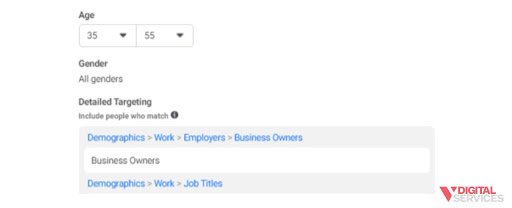
Here’s an example: Let’s say your business is dedicated to designing and producing trendy clothing for young women. Because your ad campaign will target women, the cost-per-click (CPC) could jump around $0.55, which is about $0.15 more than it would cost to target only men. On the other hand, targeting users that are 25 to 34 years old will cost you less than opting for an audience of 55 to 64-year-old users. Why is that? Because there are far fewer Facebook users in the 55 to 64-year age range than there are in the 25-34 brackets. Thus, they are more “in demand” and more expensive.
And you aren’t limited to just age and gender when it comes to customizing your target audience. You can also narrow your audience based on specific attributes or interests, such as:
- College sports
- Meditation
- Outdoor recreation
- Commuters
The list of potential attributes is long and diverse and is an extremely useful way to adjust the overall cost of your Facebook ad. Playing around with broad interests or high-value attributes can help you get a better feel of which audiences will cost you the most. For example, because frequent travelers is a far broader audience than frequent international travelers, you can expect those ads to come with a higher price.
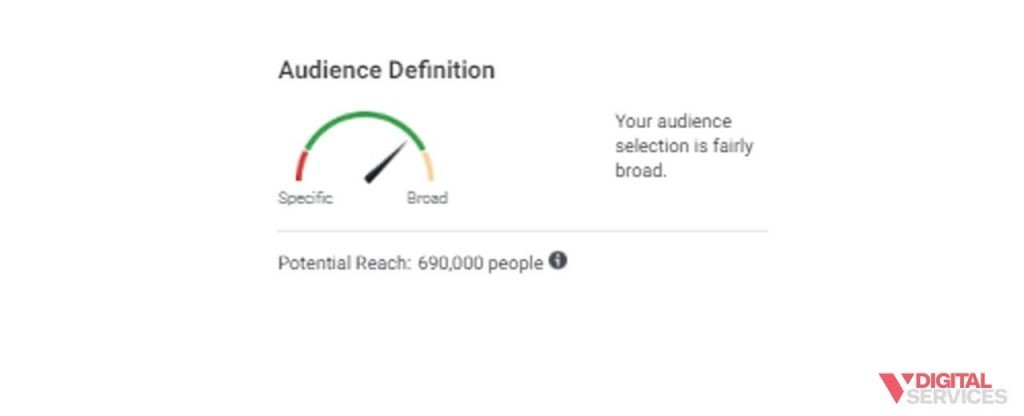 High-value attributes are an excellent way to drill down to your specific market, while broad interests often falsely inflate your audience with users of low value. These users might regularly click on your ads, but never actually complete a call-to-action (CTA). As a result, your campaign can end up with lackluster performance.
High-value attributes are an excellent way to drill down to your specific market, while broad interests often falsely inflate your audience with users of low value. These users might regularly click on your ads, but never actually complete a call-to-action (CTA). As a result, your campaign can end up with lackluster performance.
Instead, invest your time, energy, and ad budget into the people that can translate into the best value for your business. It’s more about quality than quantity, especially when you’re working towards long-term goals such as driving a sale.
-
Ad budget
Each time you create and launch a Facebook ad campaign, you will set up a budget. Regardless of the budget you choose, it has a direct effect on the overall cost, as well as ad bids, performance, and overall results.
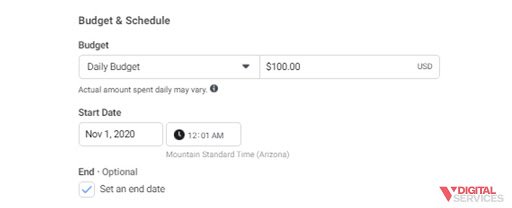
Let’s say that you launch a campaign that’s set at a monthly budget of $100 maximum, with a maximum bid of $1 for each click. Several factors come into play when it comes to CPC for Facebook ads, including bid strategy and relevance score, and the average hovers around $0.97. So, with a maximum per-click bid of $1, you aren’t exactly creating a competitive campaign – and you’re probably going to be disappointed by lower-than-ideal clicks and impressions.
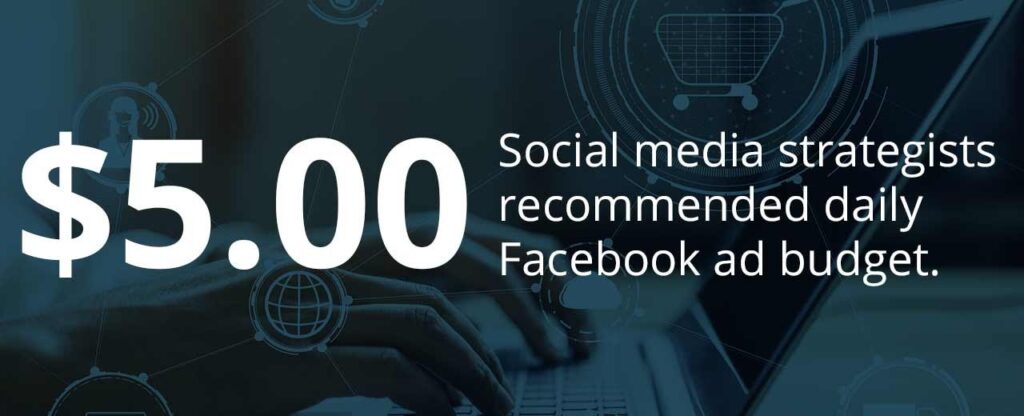
While there’s no “perfect number” for a daily budget for Facebook ads, many strategists agree that the minimum falls somewhere around the $5 mark. But if you’re working with the aforementioned $100 budget, you’re going to burn through that money by the 20th day.
That’s not even a full month of advertising and is unlikely to produce the results you’re hoping for.
Even though having a large ad spend is a clear advantage in terms of flexibility, a small budget doesn’t mean you’re completely out of the running. However, a lower budget does come with certain performance limitations, so adjust your expectations accordingly.
-
Ad bid
The amount you set for your ad bid will also alter the overall cost of your Facebook ad. There are a few different strategies suggested by Facebook, with options to fit various situations:
- The lowest cost bid strategy, also called automatic bidding, will help you secure the lowest possible cost per action or click. Because it allows you to make smart use of your budget, no matter how small, many brands opt to start their Facebook marketing with this strategy.
- Target cost bid strategy is often referred to as manual bidding and is an ideal route to working towards your desired cost per action or click. However, you can only use the target cost bid strategy for conversion, app install, lead generation, and product catalog sale campaigns, so there are some limitations.
Both your bid amount and bid strategy can either raise or lower your Facebook advertising expenses. Usually, manual bidding is more expensive, and automatic bidding gives you the best bang for your buck.
It’s here that the Facebook Ad Auction also factors in. Although we’ll cover the specifics of the algorithm that powers Facebooks’ ad services, here’s a quick rundown of the key factors it uses to rate each bidder and ad:
- Bid: The bid is the amount that you’re willing to pay for an online user to engage with your ad. For example, you can bid $1.25 for each click. For reference, Facebook says that the bid is one of the most effective ways to enhance ad performance.
- Estimated action rates: The estimated action rate illustrates how likely users are to interact with your ad (for example, by downloading your app or clicking the advertisement). To be competitive, you need a high estimated action rate. By designing an ad that will be relevant to your target audience, you can improve estimated action rates.
- Ad quality and relevance: Facebook also weighs the positive and negative interactions that users have with your ad, using this information to measure the relevance and quality. Increasing your scores for ad quality and relevance can help your ad be more successful in the Facebook Ad Auction.
Based on these three factors, your ad will be assigned a total value. The winner of the auction is the ad with the highest total value, and the one that Facebook will display to the target audience.
First and foremost, your focus should be to create a high-quality ad that is relevant to your audience. From there, you can move on to bidding strategy and bid investment. Even though taking an aggressive approach to your bid can result in a higher total value, it will also drive your overall advertising costs higher – so choose wisely.
-
Ad objective
As you are creating your Facebook ad, you will be required to select an objective from the following:
- Awareness
- Consideration
- Conversions
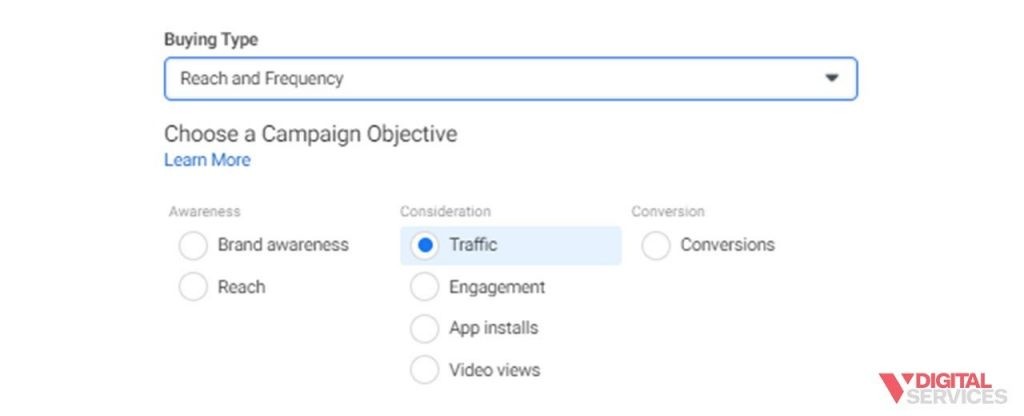 Within each of these broader objectives are specific goals. Once you choose your primary objective, you will need to then pick the goal:
Within each of these broader objectives are specific goals. Once you choose your primary objective, you will need to then pick the goal:
- Awareness
- Brand awareness
- Reach
- Consideration
- Traffic
- App installs
- Engagement
- Video views
- Lead generation
- Messages
- Product catalog sales
- Conversions
- Store visits
- Conversions
Usually, certain ad goals are considered more valuable, such as a product purchase. These goals will generally lead to higher costs. Because these types of actions provide immediate value to your business, they are far more desirable – and thus more expensive.
But as you’re constructing your ad campaign, keep in mind that brand awareness and consideration have value in their own right. In the model of the buying funnel, connecting with users is an early-stage step that can help drive interest in your brand.
These users can then move further down the funnel, eventually reaching the point of purchase. Although the purchase may come later (as compared to setting a goal for conversion), the action still provides very tangible value. Also, choosing this path will decrease your ad costs.
The key difference between a conversion goal and one related to awareness and consideration is the expected turnaround time. With conversion goals, your ad will rapidly reach a user that’s prepared to buy right now. Users that are engaging with ads created with awareness and conversion goals usually need more time before they are ready to convert.
-
Ad placement
Ad placement, or where your ads will appear, also contributes to the overall cost. There are six different placement options at present:
- Instagram Stories
- Facebook desktop newsfeed
- Facebook right column
- Facebook Messenger
- Audience Network
Because Facebook also owns Instagram, it gives you a major advertising advantage when compared to other social media platforms. Not only will you save time, but you can also easily extend your reach beyond just a single platform.
Here’s a quick comparison of the three primary platforms to choose from:
- Instagram: On Instagram, you can expect a CPC that’s significantly higher than other options. Generally, brands budget an extra $0.80 per click for Instagram ads and a CPC increase of about $0.78 for Instagram Stories.
- Facebook: Compared to Instagram, Facebook has an average CPC that’s about $0.30 less. Not only can you opt for ad placement on Facebook, but also on the Facebook Messenger app.
- Audience Network: With the Audience Network, your ads can appear on mobile apps and websites. This is the least expensive option in terms of CPC, requiring just $0.20 in additional expense per click on average.
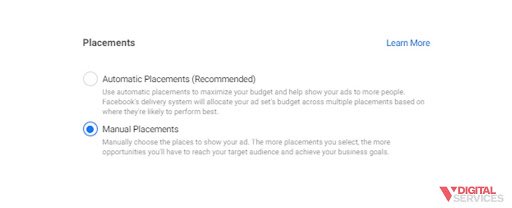 You can manually modify your ad placement, but Facebook recommends Automatic Placement by default. This option allows the delivery system to assess which platforms offer your ads the best potential results and generally puts your ad spend to its most effective use.
You can manually modify your ad placement, but Facebook recommends Automatic Placement by default. This option allows the delivery system to assess which platforms offer your ads the best potential results and generally puts your ad spend to its most effective use.
Be aware that this feature will increase your advertising costs, so turning it off is one way to cut expenses if necessary.
-
Ad quality
Facebook will evaluate the quality and relevance of your advertisements, with higher scores resulting in lower ad costs. This, in itself, is an excellent motivator for creating high-quality, relevant ads – but so is the increased likelihood that excellent ads will perform better in general. Your engagement and relevance score is assigned on a scale between 1 and 10, with 10 being the best. The positive and negative feedback that users supply about your ad directly affects this score, making ad quality even more valuable.
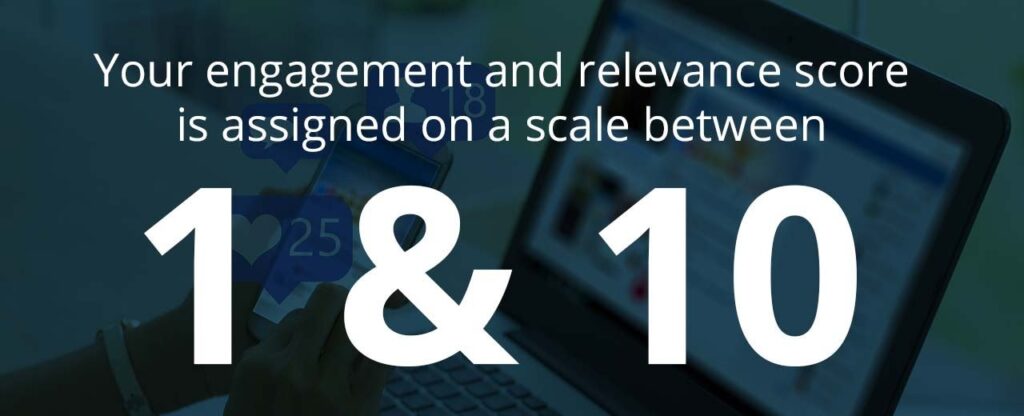
Regularly checking in with your scores is extremely important, because Facebook monitors interactions throughout the entire duration of your ad being live. To avoid an unpleasant surprise, you should always be proactive in both assessing and improving performance.
-
Season
The time of year that you launch your Facebook ad will also affect the cost – which makes sense because the season is typically a factor in the cost for most types of advertising. During certain seasons, increased demand for ad space drives a particularly competitive market, inflating overall cost.
Some of the most expensive advertising days on Facebook include Black Friday, Cyber Monday, Christmas, and New Year’s Day. One approach is to plan for a higher ad budget during high-demand seasons so that you can take advantage of the increased consumer demand while still sticking to the overall budget.
-
Industry
Finally, your specific industry comes with an average cost of advertising. While the overall average cost of a Facebook ad is $0.97, you can find a more accurate estimate by looking at per-industry costs. For example, the finance industry comes with an average CPC of $3.73, which is notably higher than the average CPC of just $0.45 for the apparel industry.
Facebook offers various cost-effective options for achieving your ad goals, including ideas specific to the industry. But for brands that are in an especially competitive market, hiring a professional social media strategist is usually the best course of action.
Why are some industries so much more expensive? The answer lies in the potential for results. Companies that are in industries with a higher average CPC typically have better success with Facebook ads than those on the lower range, for various reasons. This means that you can see whether your direct industry competitors are seeing a payoff from investing in Facebook advertising – and then decide your next steps accordingly.
How Do I Purchase Facebook Ads?
There are a few different ways to purchase an ad on Facebook (as well as its associated platforms, Instagram and Audience Network), but the most common by far is with the Facebook Ads Manager. Using the ad management tool, you can easily create an ad for your business and then submit it to the Ad Auction (discussed in detail below).
The Facebook Ads Manager is a versatile tool that makes it possible to create, edit, and analyze campaigns in one convenient place – and you can access it virtually anywhere. Using this tool, you can:
- Create new ad campaigns, choosing specific parameters such as audience and objective
- Manage the creative process, including writing ad copy and uploading creative
- Review active campaigns, editing factors such as budget, placement, creative, and audience
- Pause, relaunch, or copy ad campaigns
- Make bulk edits to multiple ads
- Assess efficacy using real-time reporting tools, assessing performance and areas for improvement
If you’re brand-new to the tool, it may take some time to learn how to navigate. However, Facebook Ads Manager has a relatively positive reputation for being user-friendly and intuitive.
When you are ready to create an ad on Facebook, you will choose between two options:
- Guided creation employs a wizard tool that uses a step-by-step process to walk you through every stage of creating and launching a common campaign. For individuals that are less familiar with the different parts of a Facebook ad campaign, guided creation can be a good place to begin.
- Quick creation is far more freeform, letting you tackle the various components in your preferred order. Once you’ve gained some experience with Facebook advertising, you might be ready to switch to quick creation.
Even if you’re new to building advertisements on Facebook, you might be surprised at just how quickly you can pick up the simple steps. Of course, the actual quality of your ad content is vital to your success – and not necessarily as easy to master – but the basic process of building and launching your ad is doable for even an advertising amateur:
- First, you’ll log into Facebook Ad Manager and prepare to build a new campaign and ad.
- You’ll set your daily budget, or the maximum budget you will spend each day of the campaign.
- Then, you choose which action you will be paying for, such as downloads, views, or clicks.
- You’ll build out your target audience, incorporating details like demographic, device, and interest.
- Next, you add your creatives, including all ad copy, images, and video material.
- Once you have finished, and everything is exactly as you want it, you approve the ad.
Finally, it’s time to launch your ad – you did it! Or at least, you’ve made it to the next stage of the process: the Facebook Ad Auction.
What is Facebook Ad Auction?
The Facebook Ad Auction is an integral part of the process, and one of the many characteristics that make Facebook advertising so unique. Understanding how the Facebook Ad Auction works will empower you to optimize your ad expenses, adjusting the factors that can increase or decrease overall cost.
After you’ve created your ad, the chance to show the ad must become available. At this point, the Facebook Ad Auction begins:
- Facebook will grade each potential ad’s quality, bid, and estimated action rates.
- Using the ad’s quality score and estimated action rates,
- Facebook then determines the ad relevance.
- Facebook considers the bid, ad quality, and estimated action rate to assign the ad a total value.
- The ad with the highest total value is the winning ad and will be delivered by Facebook.
With this information in hand, you are now able to see the metrics that matter most to your ads and their associated costs:
- Ad quality
- Ad bid
- Ad relevance
- Estimated action rate
Optimizing these metrics can help you decrease the overall cost of your Facebook ads. For example, you can work on improving overall ad quality and relevance, which not only lowers your costs, but also boosts your ads’ actual facetime with online users.
Make a Smart Investment in Social Media Marketing with V Digital Services
Once you’re ready to bravely venture into the world of Facebook advertising, we can promise that you’ll never look back. With the right approach and a smart, adaptable strategy, you can put social media to work for your brand.
V Digital Services has spent years perfecting the art of digital marketing, working diligently to stay ahead of the curve and consistently innovate with new, creative strategies. With our help, you can build your brand’s online presence and establish a strong strategy for social media success. Facebook and other social media platforms offer an exciting way to build connections with new and existing customers, opening the door to long-term growth and staying power.
Our team will work with you to pinpoint the moves that make sense for your business, maximizing your return on investment. And when you’re ready to branch out and add other social media networks to your repertoire, V Digital Services will be raring to go.
Learn more about how to advertise on Facebook and what you need to start social media marketing by contacting V Digital Services today.
Image Credits: Urupong / Getty Images
Chainarong Prasertthai / Getty Images
Blue Planet Studio / Getty Images
Urupong / Getty Images

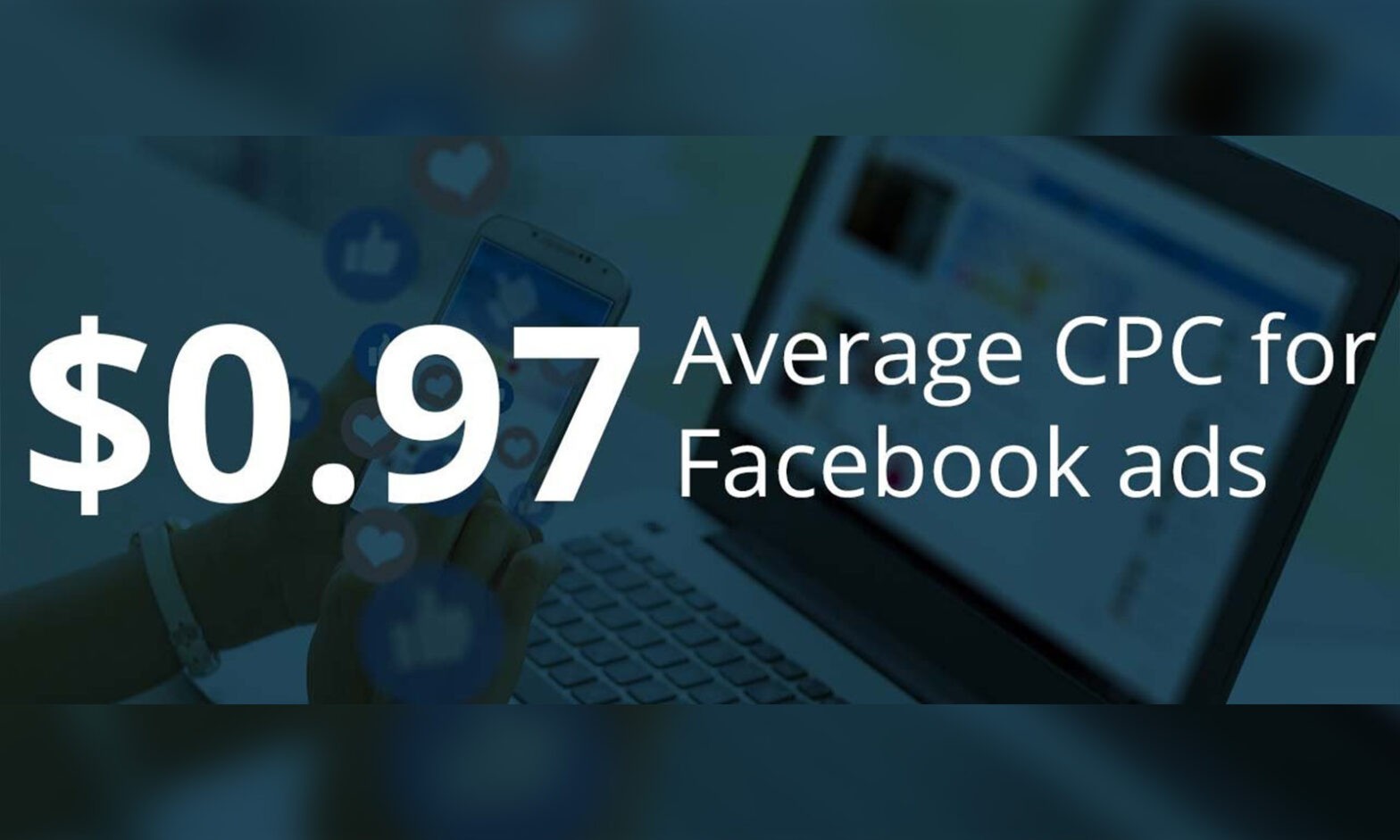
 advertising, Facebook, paid media, ppc
advertising, Facebook, paid media, ppc PREVIOUS
PREVIOUS